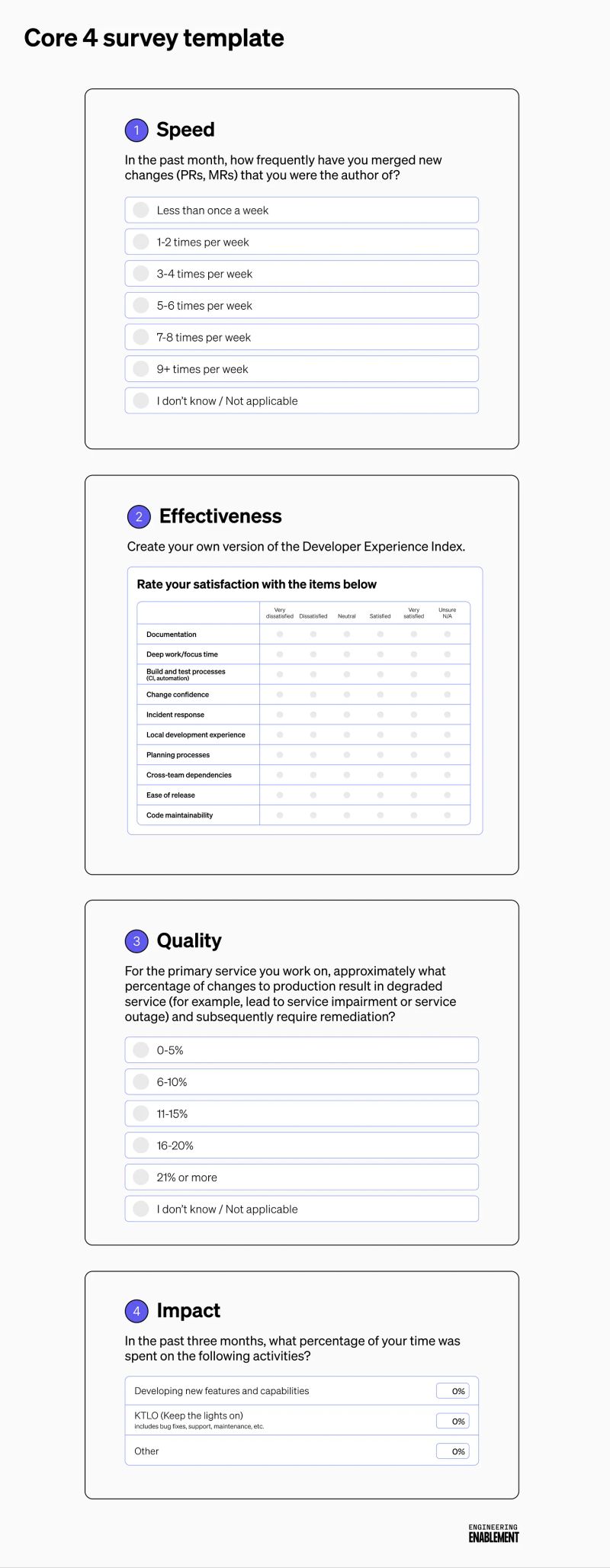Applying the Core 4 framework
How to collect and calculate the Core 4 metrics.
This post was originally published in Engineering Enablement, DX’s newsletter dedicated to sharing research and perspectives on developer productivity. Subscribe to get notified when we publish new issues.
“Start with a survey.”
Whenever an engineering leader approaches me with a question of how to start measuring developer experience and productivity, I’ve given this same answer for the last several years. And when we designed the Core 4 framework, we took ease of collection into account for each of the metrics we picked. It’s possible to use survey data to measure each of the key metrics in Core 4, and today I’m sharing a survey template so you can do it yourself.
Creating your survey
You can use this template with any surveying tool—Google Forms, Microsoft Forms, Typeform, etc.—just make sure you can view the responses in a spreadsheet in order to calculate averages. Important: responses must be anonymous to preserve trust, and this survey is designed for people who write code as part of their job.

If you already have access to clean data from your workflow tools, you can use that data along with survey data, but it’s not a requirement.
Depending on your company size, you may want to collect certain demographic information, such as team identity and tenure, in order to analyze the results. There are some considerations to take into account, which I elaborate on in this article.
Calculating your metrics
Once you’ve collected survey responses, it’s time to calculate your results.
- For Speed, Quality, and Impact, find the average value for each question’s responses.
- For Effectiveness, calculate the percent of favorable responses (also called a Top 2 Box score) across all Effectiveness responses. See the example in the template.
With your own results, you can compare your performance with those of industry peers by looking at Core 4 benchmarking data.
